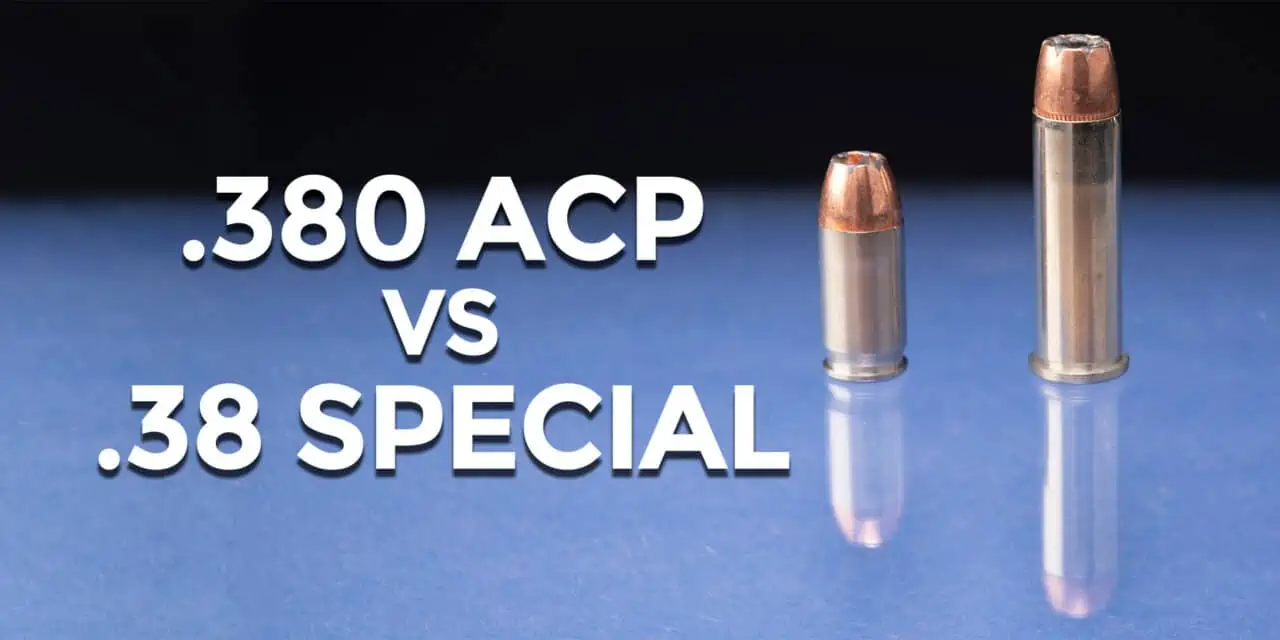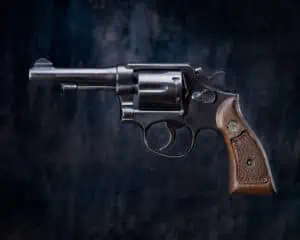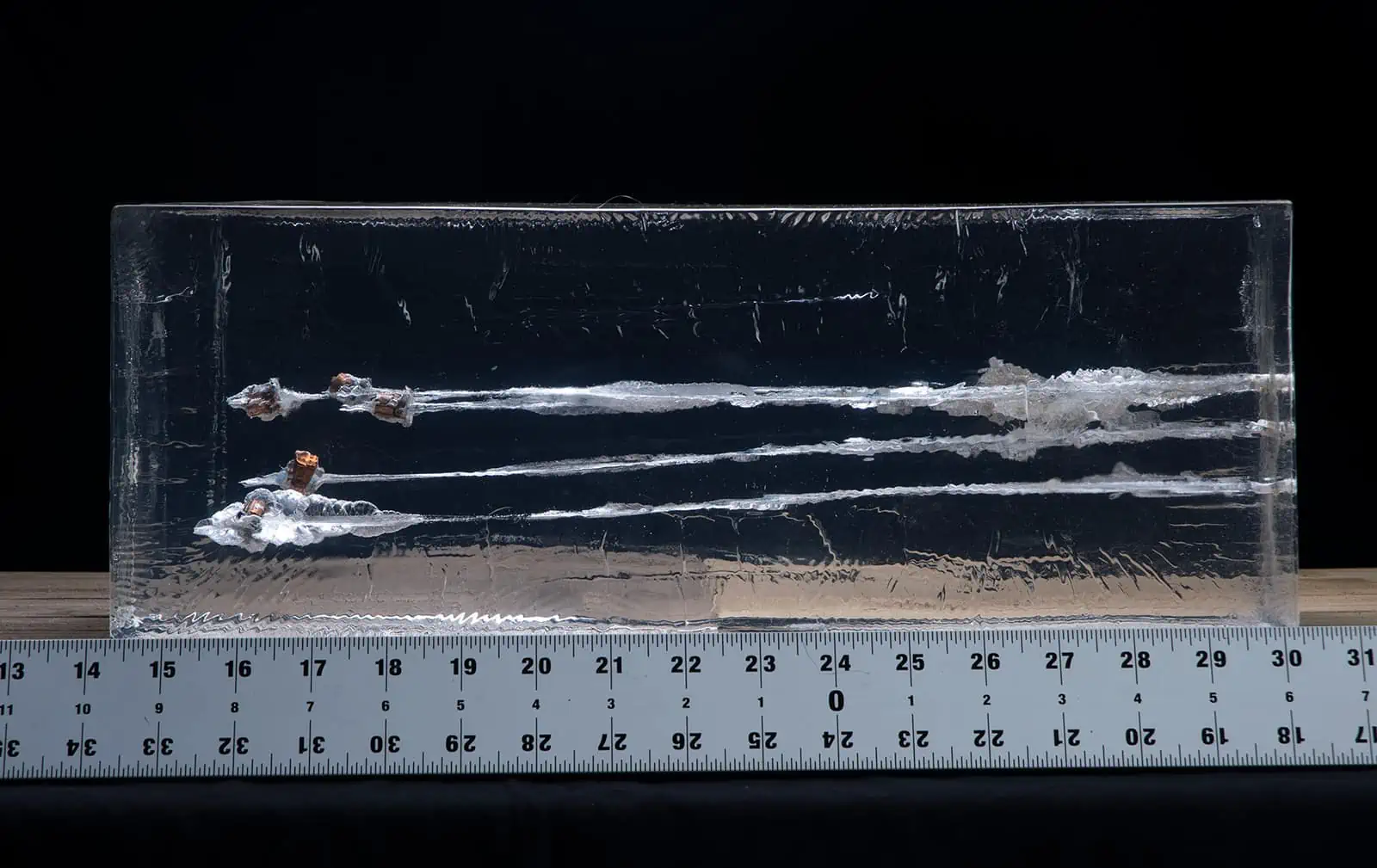Comparing 380 vs 38 Special
Some cartridges make a big splash on the market and then fade away quickly, while others stand the test of time and are still popular after over a century of service. Today, we’re going to look at two common cartridges that have long and illustrious histories, and compare 380 vs 38 special.
380 vs 38 Special Fast Facts
- Both cartridges predate 9mm Luger or 45 ACP rounds
- The penetration of 380 vs 38 Special in gel is almost the same, with 38 doing slightly better
- One is very common in revolvers, the other in semiautomatic pistols
Like many other things in the firearms world, legendary gunmaker John Moses Browning created .380 ACP. We talked a bit about the backstory of the 380 round when we compared 380 to 9mm. In essence, though, the .380 ACP round came into being because Browning wanted a round that was slightly more accurate than the pre-existing 38 ACP cartridge. He also needed something that would stack neatly inside a magazine and work well with the plethora of semi-automatic pistols he was churning out at the time.
380 ACP vs. 38 Special: What Does Each Offer?
Benefit Better Caliber
Cost Push
Velocity 38 Special
Penetration 38 Special
Ammo/Gun Availability 380 ACP
Concealability 380 ACP
Overall Recommendation 380 for Semi-Autos
38 Special for Revolvers
We’ll get into the details of this caliber debate below.
In short, 380 and 38 Special are pretty similar calibers and both can be effective self-defense rounds. For many shooters, picking one of the cartridges boils down to whether you want to carry and shoot a semi-automatic pistol (380 ACP) or a revolver (38 Spl.)
The Roots of 380 vs 38 Special
.38 Special also owes its existence to another cartridge, in this case .38 Long Colt.
Unlike 380 ACP ammo, which was designed for use in semi-automatic pistols, .38 Special was created with revolvers in mind. .38 Special is a rimmed cartridge, which means the ring around the rear of the shell casing is wider than the rest of the cartridge, This a handy feature in a round that is designed for use in revolvers because it allows the round easily stay in-place inside of each chamber in the cylinder of a revolver, without the use of a moon clip or a similar device. .380 ACP and .38 Special have much in common. Both cartridges were trusted for self-defense for many years.
.380 ACP was used in military service pistols like the FN Model 1910 and the iconic Walther PPK.
.38 Special, on the other hand, served for many, many years as the round of choice for American law enforcement, thanks to revolvers such as the Colt Detective Special or Smith and Wesson M+P.
Today, however, the ubiquitous 9mm Luger round has eclipsed both rounds as a service pistol cartridge. Both law enforcement and military personnel are far more likely to carry a Glock or a Sig Sauer than they are a .38 Special revolver. Instead, both .380 ACP and .38 Special are quite often found in pocket pistols. A pocket pistol probably shouldn’t be your first choice in a defensive firearm. However, their small size make them easy to conceal. This, in turn, means you can carry them in situations where a larger, 9mm pistol might reveal itself and cause unwanted questions.
Testing 380 vs 380
.38 Special and .380 ACP are still popular cartridges, however. In fact, in recent years, there has been a movement towards larger pistols which take advantage of .380 ACP’s lower recoil and are designed for people with reduced physical strength. We reviewed the Sccy CPX-3 as part of our comparison of these types of compact 380 pistols. That’s also one of the pistols we’ll use to compare 380 vs 38 Special.
The other pistol we’ll use in our test of 380 vs 38 is an American icon, the Smith & Wesson Model 10. For years, the Model 10 and similar revolvers were the sidearm of choice for patrol officers all over the country. The need for more firepower and the introduction of the “wonder nine” 9mm pistol meant the full-size .38 revolver was replaced with other guns. .38 Special lives on, though, as a pocket pistol round. More than that, however, .38 Special is a big part of the “revolver renaissance” that has taken over a portion of the firearms training community.
When we talk about 380 vs 38 Special, what we’re really talking about is their effectiveness as a defensive cartridge. We want to see how each round performs in industry-standard tests and compare the results. We’ll perform two tests to accomplish this goal. The first is a standard chronograph test to see how much energy there is in rounds of 380 vs 38 Special cartridges. For the second test, we’ll shoot five rounds of the same type of defensive ammunition into a block of ballistics gel to understand what each round does when it hits a target.
Ballistics & Chronograph Testing
380 ACP Tests
Average Muzzle Velocity: 905 FPS
Average Muzzle Energy: 173 ft/lbs
Average Muzzle Velocity: 918 fps
Average Muzzle Energy: 168 ft/lbs
38 Special Tests
Average Muzzle Velocity: 810 FPS
Average Muzzle Energy: 189 ft/lbs
Average Muzzle Velocity: 952 fps
Average Muzzle Energy: 181 ft/lbs
The Sccy CPX-3 has a barrel length of 2.96 inches, while the S&W Model 10 has a 4 inch barrel. The extra inch of barrel length for the .38 Special revolver probably added a few more feet per second to each round, but even still, the rounds are within 100 feet per second of each other.
Now let’s look at our gel test results to see what penetration into a soft target looks like.
380 vs 38 Special Penetration Testing
Gel Test Results for 380 ACP
Speer Gold Dot JHP (Average of 5 Rounds)
Minimum Penetration Depth: 10.75 inches
Maximum Penetration Depth: 11.75 inches
Average Penetration Depth: 11.22 inches
Average Bullet Width: 0.47 inches (+0.12 inches expansion)
38 Special Gel Test Results
Speer Gold Dot JHP (Average of 5 Rounds)
Minimum Penetration Depth: 12.5 inches
Maximum Penetration Depth: 14.25 inches
Average Penetration Depth: 13.5 inches
Average Bullet Width: 0.47 inches (+0.11 inches expansion)
The FBI recommends that a defensive round should penetrate at least 12 inches into ballistics gel. This distance is consistent with rounds that can punch through tissue and reach a vital spot that can shut down an attacker.
The Gold Dot .38 Special ammo we tested reached that distance, the .380 ACP did not. This, however, doesn’t mean that .380 ACP is an ineffective defensive cartridge. It does mean, however, that you need to pay attention to which particular round you use in your gun. You want to get one that is up to the task of defending your life.
Making Your Choice
Ultimately, 380 vs 38 Special is more about the guns than it is about the round itself. Both rounds have rather similar performance. However, as we said at the beginning, .380 ACP is associated most often with semi-automatic pistols, and that’s probably going to be more important to you than choosing 380 over 38 Special. If you want the reliability and compact size of a revolver, especially a pocket-sized gun, .38 Special should be your round of choice. If, however, you prefer the flatter profile and higher capacity of a pistol, a pint-sized .380 ACP pistol can slide into just about any pocket. Both of these cartridges have decades of service behind them, and there’s no reason to think they won’t have decades more.







.38 > .380 any day of the week and twice on Sunday!
I think a 38 snubby vs the SCCY would have been a better comparison.
I carried the Model 10 on and off duty for 15 years. It is a fine weapon but It is heavy and a bear to conceal. I carried a a Chief’s Special Model 36 on and off duty interspersed also in that 15 years. The 36 is much easier to conceal of course but is still a little heavy. I never owned a 37 or other lightweight snubby.
I’ve tried carrying the Glock 26. It is concealable but still you are conscious of its weight 23 ounces about. I carry an LCP with a dedicated Hogue grip and 7 round mag with one in the chamber and a 7 round mag in my pocket making 15 total rounds vs 5 or 10 for the snubby. I also carry the LeHigh Defense standard pressure defense rounds In a kydex IWB holster It’s Very concealable and lightweight and I carry can carry comfortably all day every day. The internet’s view that .380 will bounce off T-Shirts notwithstanding I will continue to carry the small .380 and have no qualms. It is an effective and deadly round.
There are .380 ACP (AKA 9mm Kurz, 9×17) rounds which pass the gelatine test to perform to FBI standards. See https://www.luckygunner.com/labs/self-defense-ammo-ballistic-tests/#380ACP
It’s nice to compare ammo as close as practical, including brand and bullet style — but if the comparison uses different bullet weights and different barrel lengths, does it really mean much to stick with the same bullet design? Gold Dot seems to have fallen to the top rank of underperformers in .380 compared to bullet introductions from the past few years by Federal and Hornady. Little things matter in a little caliber.
Not sure there’s any reason revolvers couldn’t headspace on the case mouth as well as autos. I had the idea that revolvers just never got serious about extracting rimless cases — whether for practical reasons or just custom.
The article is only partially correct: the rim is needed on revolvers mostly for extraction, not for headspacing. The star extractor on double-action revolvers requires a rimmed cartridge or a moon clip. There are revolvers chambered in 9mm or .45 ACP that headspace on the case mouth without the need for moon clips.
Most of these 9mm and 45 ACP revolvers that headspace on the case mouth are single-action only (such as the Ruger Vaquero and Ruger Blackhawk). Ruger sells “convertible” revolvers in .45 Colt that have a spare cylinder that fires .45 ACP, and revolvers chambered in .357 that have a spare cylinder that fires 9mm in a .37 revolver, or .45 ACP in a .45 Colt revolver.
Since these are single-action only, you eject each empty case one at a time, whether the empty case is 9mm or .357 or .45 Colt or .45 ACP.
The muzzle energy for the 135 grain Gold Dot at 952 fps should be 272 ft/lbs, not 181 ft/lbs
Last year, I bought a Charter Arms Pitbull in 9mm. Compact and powerful; ballistics are better than .38 Special, especially in a short barrel. I was never a fan of .38-only snubbies. IMHO, not powerful enough. I never shoot standard velocity .38s either. It’s always +P in my .357 revolvers. The .380 is capable as well as long as one uses good ammo (Hornady, Speer, etc.) for defensive purposes.
Good read, thanks for stats!
380 vs 38 is a lot more about guns, thats for sure. 380, in my opinion, is a perfect CCW carry. You won’t be needing much more firepower in time of need.
Personally, I own 3 guns for that round: Kimber micro( which my wife uses), Ruger LCP( at home) and my go-to carry – Sig p365 380 ACP https://gritrsports.com/shooting/firearms/pistols/380-acp/
For ammo i usually use Gold dots(nothing special, it the best SD ammo after all!)
You claimed, “Both cartridges predate 9mm Luger or 45 ACP rounds.”
That’s incorrect, totally backwards. In reality, the .380 ACP is the newest of the three cartridges! Here are the facts:
The 9mm Luger cartridge was designed in 1901 and produced from 1902 to present.
The .45 ACP cartridge was designed in 1904 and produced from 1905 to present.
The .380 ACP cartridge was designed in 1908 and produced 1908 to present.